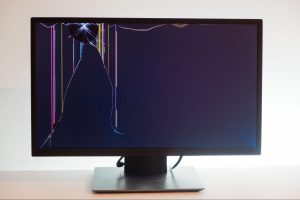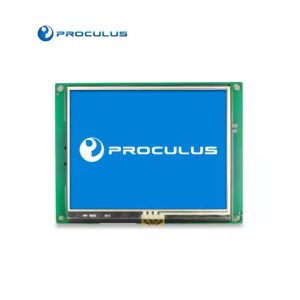LCD panel problems: what they are and how to fix them
LCD panel problems can arise when working with display technology due to manufacturing defects, environmental factors, or prolonged use.
These issues can affect performance, image quality, and user experience, making it essential to identify their causes and find the most effective solutions.
Whether you’re dealing with blurred images, dead pixels, or touchscreen malfunctions, understanding these common problems and how to fix them will help you maintain optimal display functionality.
This guide explores the most frequent LCD panel issues, how to diagnose them, and the best practices to prevent failures. Keep on reading!
 Diagnosing LCD panel issues requires a structured approach to identify the root cause and determine the best solution.
The first step is a thorough visual inspection of the display to check for any cracks, discoloration, or irregularities.
If the screen appears physically intact, it is essential to examine all cable connections, ensuring that ribbon cables and power sources are securely attached and free from damage.
If the issue persists, testing the panel with an alternative power supply or driver board can help determine whether the problem originates from the LCD module itself or the supporting hardware.
Using diagnostic software to check for pixel defects, refresh rate inconsistencies, or firmware errors can also provide valuable insights.
In cases where touchscreen malfunctions occur, recalibrating the panel or testing it on a different system may confirm whether the issue is software-related or a hardware failure.
Diagnosing LCD panel issues requires a structured approach to identify the root cause and determine the best solution.
The first step is a thorough visual inspection of the display to check for any cracks, discoloration, or irregularities.
If the screen appears physically intact, it is essential to examine all cable connections, ensuring that ribbon cables and power sources are securely attached and free from damage.
If the issue persists, testing the panel with an alternative power supply or driver board can help determine whether the problem originates from the LCD module itself or the supporting hardware.
Using diagnostic software to check for pixel defects, refresh rate inconsistencies, or firmware errors can also provide valuable insights.
In cases where touchscreen malfunctions occur, recalibrating the panel or testing it on a different system may confirm whether the issue is software-related or a hardware failure.
7 common LCD panel problems and their causes
While LCD technology has advanced significantly, certain problems still occur due to factors like manufacturing defects, prolonged use, or environmental conditions. Here are the most common LCD panel issues and what causes them:1. Display blurred before installation
A display that appears blurred even before installation is often a sign of an underlying issue with the hardware or compatibility. This problem may stem from a loose or improperly connected ribbon cable between the LCD panel and the driver board, leading to poor signal transmission. In some cases, incompatibility between the display and the control system can cause improper rendering, resulting in a distorted or unclear image. Another common reason is factory defects or damage sustained during transportation, which may affect the liquid crystals or polarizer film. Verifying the connections and ensuring compatibility with the driver board is essential before installation.2. Display blurred after a period of use
If a display that initially worked correctly starts to blur over time, it is likely caused by environmental factors or component degradation. Exposure to excessive heat can lead to the deterioration of the liquid crystal alignment, affecting image clarity. Moisture infiltration is another possible cause, as it can interfere with the internal layers of the display and impact performance. Additionally, the aging of the polarizer film or backlight system can contribute to a gradual loss of image sharpness. Regular maintenance and proper ventilation can mitigate these risks and extend the lifespan of the LCD panel.3. Dead pixels or stuck pixels
Dead pixels appear as small black dots on the screen, indicating that individual subpixels are no longer functioning. This issue typically results from manufacturing defects or physical damage to the display matrix. Stuck pixels, on the other hand, remain permanently lit in a single color and may be caused by minor electrical inconsistencies. While dead pixels are usually irreversible, some stuck pixels can be corrected through pixel-refreshing software or by applying gentle pressure to stimulate the affected area, though these methods have varying success rates and don’t work in all cases. If multiple pixels fail, it may indicate a larger problem with the display’s internal circuitry.4. Flickering or blinking display
A flickering or blinking LCD panel is often linked to power supply instability or signal interference. Voltage fluctuations can disrupt the backlight system, leading to inconsistent brightness levels. In some cases, loose or damaged ribbon cables can result in intermittent signal transmission, causing the display to flicker. A mismatched refresh rate setting between the display and the control system can also contribute to the problem, creating an unstable viewing experience. Ensuring a stable power source, securing all connections, and adjusting the refresh rate settings can help resolve these issues.5. Backlight failures
The backlight system illuminates the display, and any failure in this component can result in a dim or completely dark screen. One of the most common causes of backlight failure is the degradation of LED strips over time, which reduces brightness levels. Faulty inverters or power circuits can also prevent the backlight from receiving adequate power, leading to sudden or gradual dimming. Extended use without proper cooling can accelerate the wear of backlight components. Replacing the damaged LED strips or troubleshooting the power supply can restore proper functionality.6. Ghosting or image retention
Ghosting occurs when previous images remain faintly visible on the screen, creating an overlapping effect. This issue is often associated with slow pixel response times, where liquid crystals do not transition quickly enough between states. Image retention, sometimes called burn-in, happens when a high-contrast image remains on the screen for an extended period, causing a temporary or permanent imprint. While modern LCDs are less prone to permanent burn-in than older display technologies, prolonged exposure to static images can still cause retention issues. Reducing brightness levels, using screensavers, and periodically refreshing the display can help minimize these effects7. Touchscreen malfunctions
A touchscreen that becomes unresponsive, registers incorrect inputs, or exhibits erratic behavior may indicate issues with the digitizer or internal connections. In some cases, loose or damaged touch sensors can cause sensitivity loss in certain areas of the screen. External factors, such as electromagnetic interference from nearby electronic devices, can also affect touch accuracy. Accumulated dust, moisture, or oil on the screen’s surface may further contribute to touch inconsistencies. Cleaning the screen, recalibrating the touchscreen settings, and checking for firmware updates can often resolve these problems. If the issue persists, replacing the digitizer may be necessary.How to diagnose LCD panel issues?
 Diagnosing LCD panel issues requires a structured approach to identify the root cause and determine the best solution.
The first step is a thorough visual inspection of the display to check for any cracks, discoloration, or irregularities.
If the screen appears physically intact, it is essential to examine all cable connections, ensuring that ribbon cables and power sources are securely attached and free from damage.
If the issue persists, testing the panel with an alternative power supply or driver board can help determine whether the problem originates from the LCD module itself or the supporting hardware.
Using diagnostic software to check for pixel defects, refresh rate inconsistencies, or firmware errors can also provide valuable insights.
In cases where touchscreen malfunctions occur, recalibrating the panel or testing it on a different system may confirm whether the issue is software-related or a hardware failure.
Diagnosing LCD panel issues requires a structured approach to identify the root cause and determine the best solution.
The first step is a thorough visual inspection of the display to check for any cracks, discoloration, or irregularities.
If the screen appears physically intact, it is essential to examine all cable connections, ensuring that ribbon cables and power sources are securely attached and free from damage.
If the issue persists, testing the panel with an alternative power supply or driver board can help determine whether the problem originates from the LCD module itself or the supporting hardware.
Using diagnostic software to check for pixel defects, refresh rate inconsistencies, or firmware errors can also provide valuable insights.
In cases where touchscreen malfunctions occur, recalibrating the panel or testing it on a different system may confirm whether the issue is software-related or a hardware failure.
How to fix LCD panel problems?
Fixing an LCD panel issue depends on the nature of the malfunction. If the display appears blurred or flickers, adjusting the power supply, replacing faulty cables, or updating firmware may resolve the problem. Dead or stuck pixels can sometimes be corrected using pixel-fixing software or gently applying pressure to the affected area. When backlight failures occur, checking the LED backlight strips and inverter circuits can identify whether replacement components are needed. If the screen experiences ghosting or image retention, adjusting brightness settings, enabling pixel refresh functions, or reducing prolonged exposure to static images can help mitigate the issue. For touchscreen problems, recalibrating the display, ensuring a clean surface, and verifying software compatibility may restore functionality. If these solutions do not work, replacing the affected components or consulting a professional technician may be necessary.Best practices to prevent LCD panel failures
Several preventive measures should be taken to maximize the lifespan of an LCD panel and reduce the risk of malfunctions. Proper handling is crucial to avoid applying excessive pressure on the screen, which can lead to dead pixels or touchscreen malfunctions. Ensuring a stable power supply with adequate voltage regulation helps protect against electrical damage and flickering issues. Regular cleaning with appropriate materials, such as microfiber cloths and non-abrasive screen cleaners, prevents dirt and residue buildup that can affect display clarity and touchscreen responsiveness. Maintaining proper ventilation and avoiding prolonged exposure to direct sunlight can prevent overheating, which contributes to liquid crystal degradation and backlight failure. Keeping firmware and driver software up to date ensures compatibility with system hardware, reducing the likelihood of performance issues over time.Why Choose Proculus Technologies?
Proculus Technologies is a leader in intelligent display solutions, providing high-quality LCD modules designed for performance, durability, and ease of integration. With a strong focus on innovation, the company offers a range of TFT LCD modules with user-friendly software to simplify development and enhance user interfaces. By combining cutting-edge technology with expert support, Proculus Technologies delivers solutions tailored to the needs of industrial, medical, and embedded applications. For those seeking a reliable and efficient LCD display module, Proculus Technologies offers advanced UART TFT LCD Modules that streamline development and improve display performance. Upgrade Your Display Today! Discover the power of Proculus UART TFT LCD Modules and take your projects to the next level!
Category:
Author:
Client:
Date:
PHP Code Snippets Powered By : XYZScripts.com
 English
English


